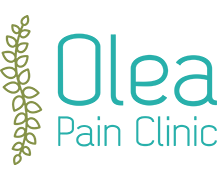Greater Occipital Nerve Block and Pulsed Radiofrequency
The anatomy of the greater occipital nerve
The greater occipital nerve is a spinal nerve which is the medial branch of the cervical spinal nerve’s dorsal primary ramus (the cervical spine nerve’s posterior division). Along with the lesser occipital nerve, the greater occipital nerve arises in between the first and second cervical vertebrae to supply the skin of the scalp.
- Causes of Occipito-frontal headaches or nerve pain
- Occipital nerve block and pulsed radiofrequency procedure
- Complications
Causes of Occipito-frontal headaches or nerve pain
Occipital nerve pain, or occipital neuralgia presents with a headache. It may affect one or both sides of the head with a typical radiation from the back of the head or neck to the top and or front of the head. Among the most common causes are facet joint wear and tear, head or neck injury, whiplash and chronic neck tension. Osteoarthritis, infection, gout, blood vessel inflammation and seemingly spontaneous attacks are other known causes.
Occipital nerve block and pulsed radiofrequency procedure
The occipital nerve block procedure can be performed with an anatomical landmark technique or ultrasound guidance. A small needle in the back of your hand can be used to administer sedation or in case of an emergency. The skin is well cleaned before a small amount of local anaesthetic is applied in order to numb the injection area. The mixture which is injected around the greater occipital nerve is typically a combination of steroids and local anaesthetic. Steroids usually provide pain relief after around four days after the treatment. The occipital nerve block procedure can be combined with pulsed radiofrequency treatment for prolonged effect – we outline this procedure below.
Pulsed radiofrequency is performed under real-time ultrasound guidance in order to achieve greater accuracy. A Radiofrequency generator is used to enable the application of short pulses of radiofrequency signals. The needle position close to the nerve is also checked by before passing a small amount of electrical current typically up to a temperature of 42°C. Pain relief can last for 9 months or more if the results are positive. This procedure can be described as a ‘retuning’ of the nerves so that they modulate pain transmission.
Patients are then monitored in a recovery area before transfer to the ward and discharge home. Patients may experience a numb feeling for a few hours. Pain at the injection site may increase for five or more days. It is advisable to rest for 24 hours and resume stretches and exercises when the pain eases. This window of pain relief should be utilised for performance of strengthening exercises and physiotherapy.
Complications
There is a variable response to injection treatment. It is important to discuss both the benefits and risks of the procedure with your doctor before any agreement to undergo the procedure is reached. Patients may experience a numb feeling for a few hours. Pain at the injection site may increase for seven or more days.Ice packs and painkillers can be used to treat these post-procedural flare-ups. It is advisable to rest for 24 hours and resume stretches and exercises when the pain eases. Although the chance of any complications is generally low, as with all surgical procedures, there is an element of risk involved including failure to get benefit. Possible complications, as with all interventional procedures, include bleeding, bruising and infection. Nerve damage is extremely rare. There may be an allergic reaction to the steroid or any of the medications.
